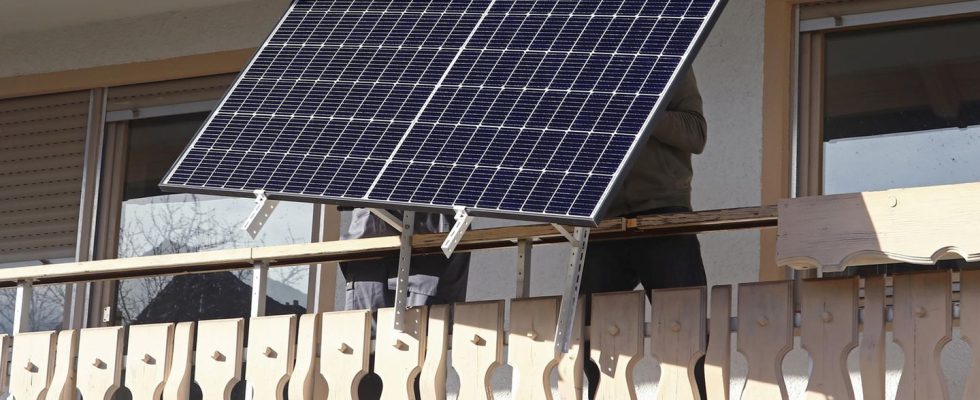The question of storage for a balcony power plant often arises even before the purchase. Anyone who produces their own electricity with a balcony power plant wants to use as much of it as possible.
Electricity that is generated during the day using a balcony power plant can be fed into your own power grid. The refrigerator or washing machine can then run with the solar energy. If more electricity is generated than is consumed, it goes into the public grid. With a storage device or a so-called solar box, excess electricity can also be stored so that it can then be used in the evening or at night. But such storage is expensive. Is the investment actually worth it? We looked at the advantages and disadvantages of a balcony power plant with storage.
The advantages of a balcony power plant with storage
A balcony power plant offers independence – for example from rising electricity prices. With storage, this independence becomes even greater because more of the electricity you produce can be used. Excess energy from the mini solar system then goes into a battery, which stores it for times when there is no electricity from the balcony power plant, for example in the evening. This increases the amount of electricity that does not have to be purchased from the supplier and thus saves additional costs. Some solar storage systems can even be used for emergency power supply or mobile. Balcony power plants in a double pack with a storage unit are available on Ebay, for example, for around 1,200 euros.
Click here to see the offer on Ebay
- More effective use of the solar power generated
- Less dependent on rising electricity prices
- Less dependent on the local power grid
- Some can also be used as an emergency power supply or mobile
Balcony power plant with storage: These are the disadvantages
Additional storage for your home balcony power plant is an expensive investment. The battery itself costs several hundred euros, but if you want to buy the system and memory in a double pack, you will quickly spend over a thousand euros. In addition to money, space also needs to be invested. If the balcony at home isn’t particularly large anyway, there is no storage space that could have been used differently. In addition, storage for balcony power plants, like all batteries, loses performance over time. The production and disposal are also always associated with ecological impacts.
- Expensive to purchase
- Take up additional space
- Loss of performance after a few years
- Production and disposal with ecologically negative effects
A balcony power plant can often pay for itself after just a few years, and an additional storage system significantly extends the time until it is paid off. It may therefore make sense to initially buy a balcony power plant without storage. Those interested can currently benefit from a 15 percent discount and free shipping from the provider Kleines Kraftwerk.
Click here for the offer at Kleines Kraftwerk
For whom is a mini solar system with storage worthwhile?
A balcony power plant with 600 to 800 watts of power can usually cover the electricity needs of all domestic electrical devices in standby mode. As soon as the washing machine is turned on, depending on the program, all of the electricity generated by the system is often required. Before purchasing a storage system for the balcony power plant, the main thing to consider is: How much electricity can the balcony power plant actually generate, and is there still a lot of surplus to be expected? If you already have a balcony power plant and notice that there is a large amount of excess electricity, you can also retrofit the system with a storage system. They are available on Ebay, for example.
Click here to see the offer on Ebay
- Solar storage for balcony power plants for 799 euros
- Lasts for around 6,000 charging cycles
- 1.6 kWh storage capacity
- easy installation
- Real-time data via app
Ultimately, the question of whether storage is worth it can hardly be answered in general terms. Many factors play a role, such as how much sun the balcony power plant actually gets or how much electricity is used during the day. If the solar power generated is already heavily used during the day, there may no longer be any excess energy that can be stored. Even over the autumn and winter months, when the sun shines less, the energy surplus is likely to be significantly lower, so that the high costs of storage are offset by less benefit. In many cases it can then make more sense to forego the storage and instead apply for a feed-in tariff for the public power grid.
This article contains so-called affiliate links. Further information are available here.

